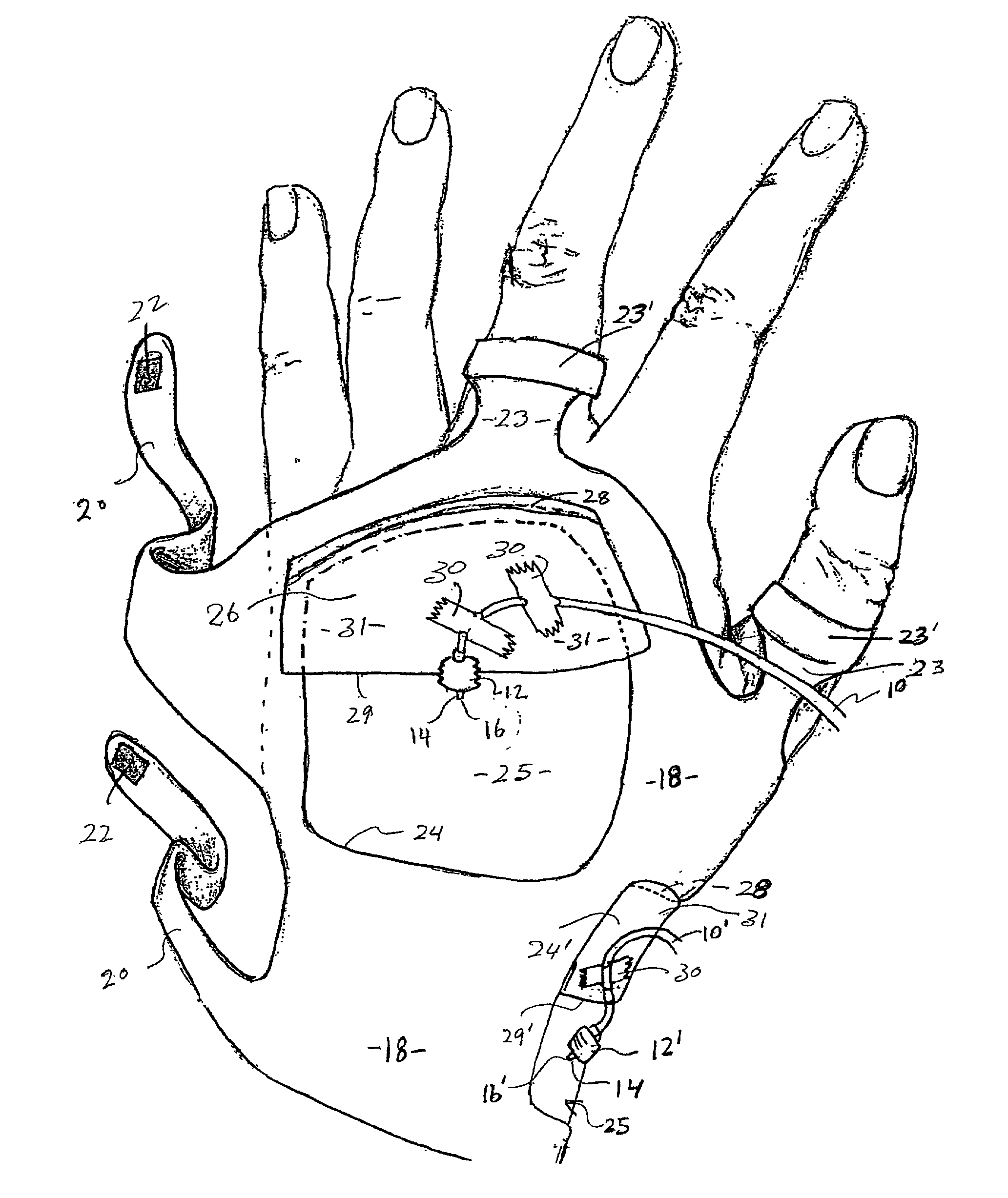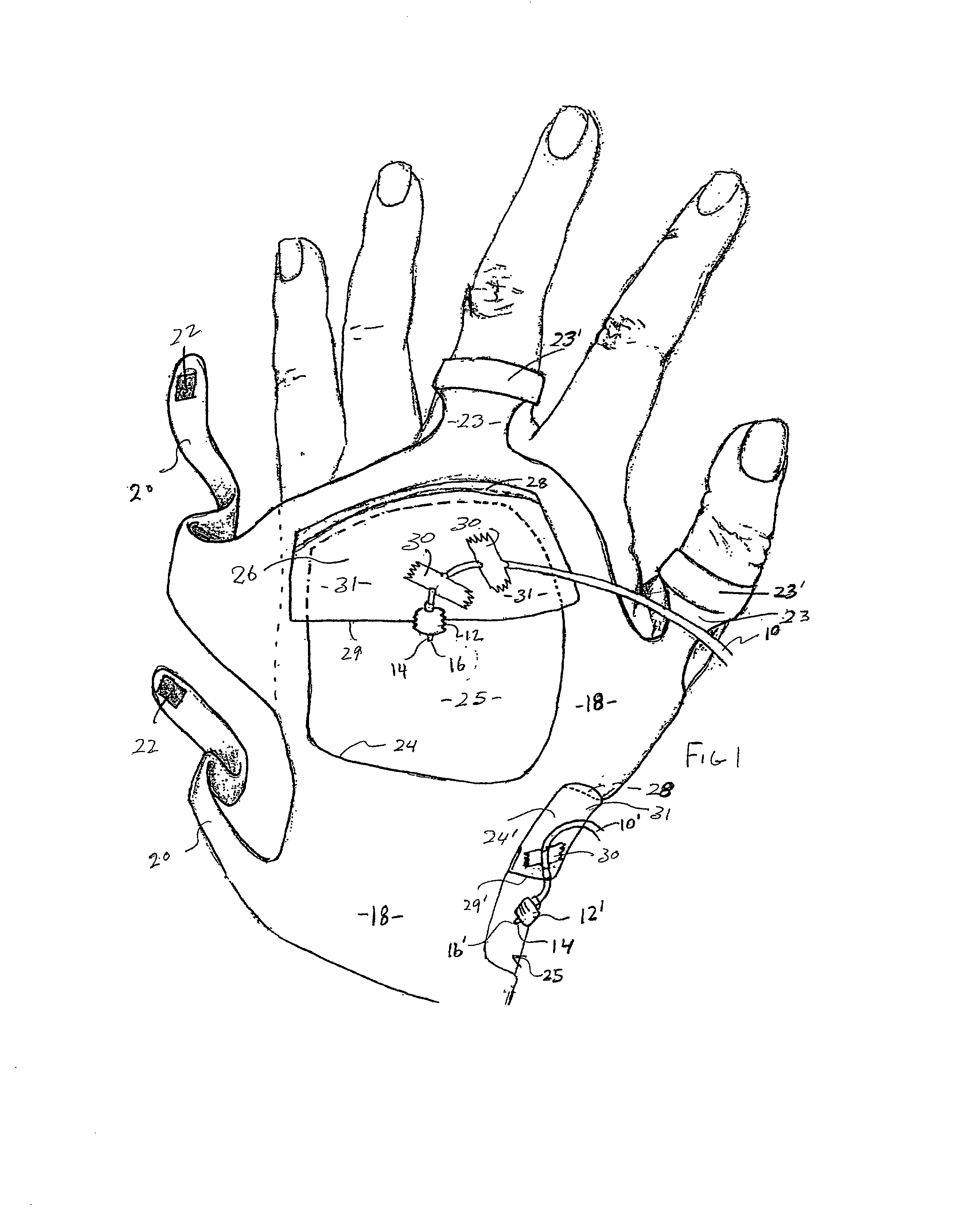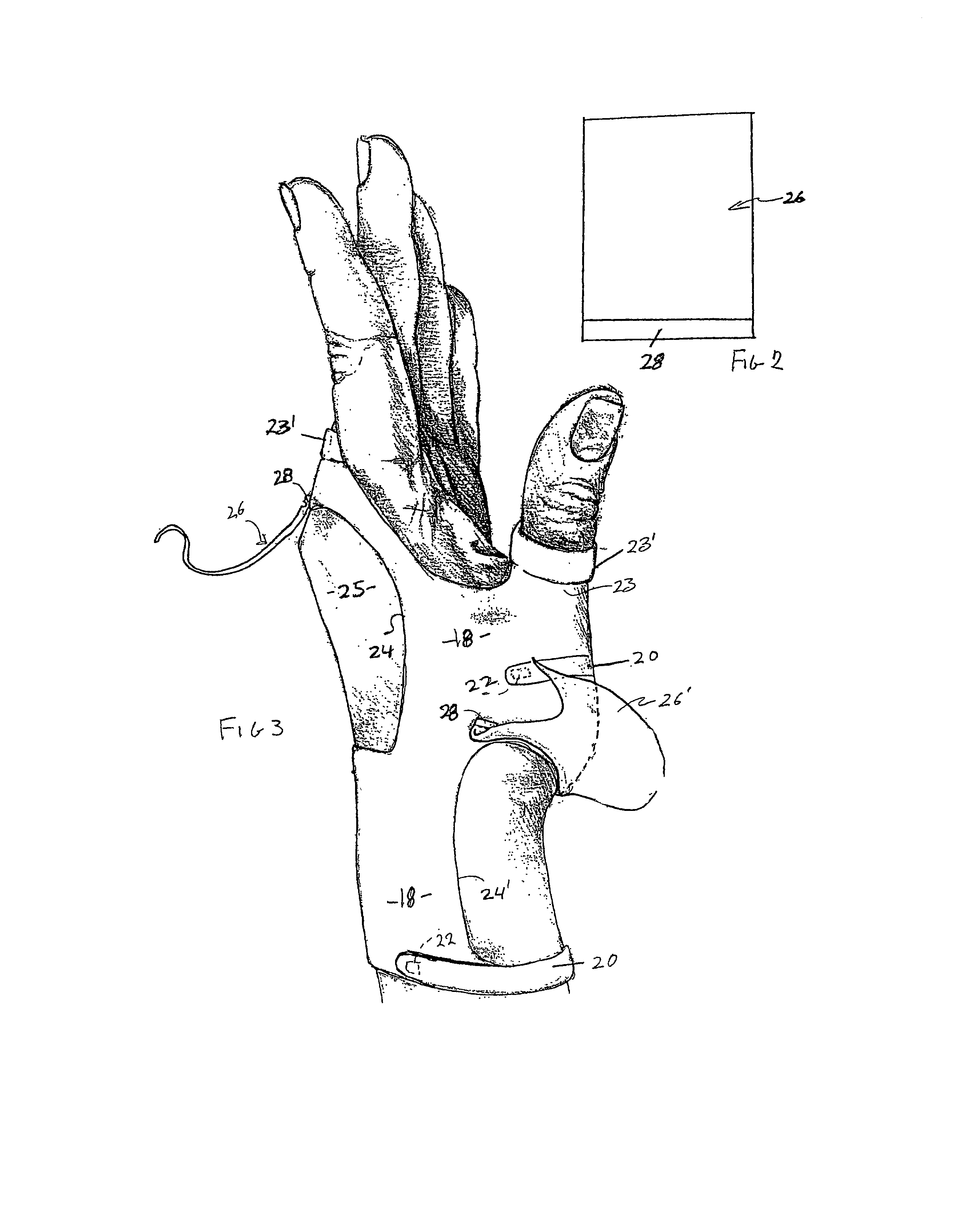Catheter securement assembly
a technology for securing catheters and assemblies, applied in the field of catheter securement assembly, can solve the problems of catheter securement, skin irritation, and irritation of patients' skin, and achieve the effect of avoiding skin irritation, discomfort or infection of patients, and avoiding skin conditions of patients at the entry site or in surrounding relation
- Summary
- Abstract
- Description
- Claims
- Application Information
AI Technical Summary
Benefits of technology
Problems solved by technology
Method used
Image
Examples
Embodiment Construction
[0044]As shown in the accompanying drawings, the present invention is directed to an assembly for the mounting and securement of a catheter structure 10 including, but not limited to, an IV tube as well as an accompanying hub 12 and penetrating needle or like instrument 14. As such, the various preferred embodiments of the catheter securement assembly of the present invention may comprise individual structural modifications which facilitate the mounting on or otherwise association with at least one predetermined portion of a patient's body.
[0045]As commonly recognized, catheters, including IV tubes, etc. may enter the patient's body at an entry site 16 wherein the specific location of the entry site 16 may vary. By way of example only, conventional entry sites may be located on the hand, lower arm or wrist, elbow, ankle, head, neck and throat, nose and face, etc. Accordingly, the various preferred embodiments of the catheter securement assembly of the present invention may be indivi...
PUM
 Login to View More
Login to View More Abstract
Description
Claims
Application Information
 Login to View More
Login to View More - R&D
- Intellectual Property
- Life Sciences
- Materials
- Tech Scout
- Unparalleled Data Quality
- Higher Quality Content
- 60% Fewer Hallucinations
Browse by: Latest US Patents, China's latest patents, Technical Efficacy Thesaurus, Application Domain, Technology Topic, Popular Technical Reports.
© 2025 PatSnap. All rights reserved.Legal|Privacy policy|Modern Slavery Act Transparency Statement|Sitemap|About US| Contact US: help@patsnap.com



